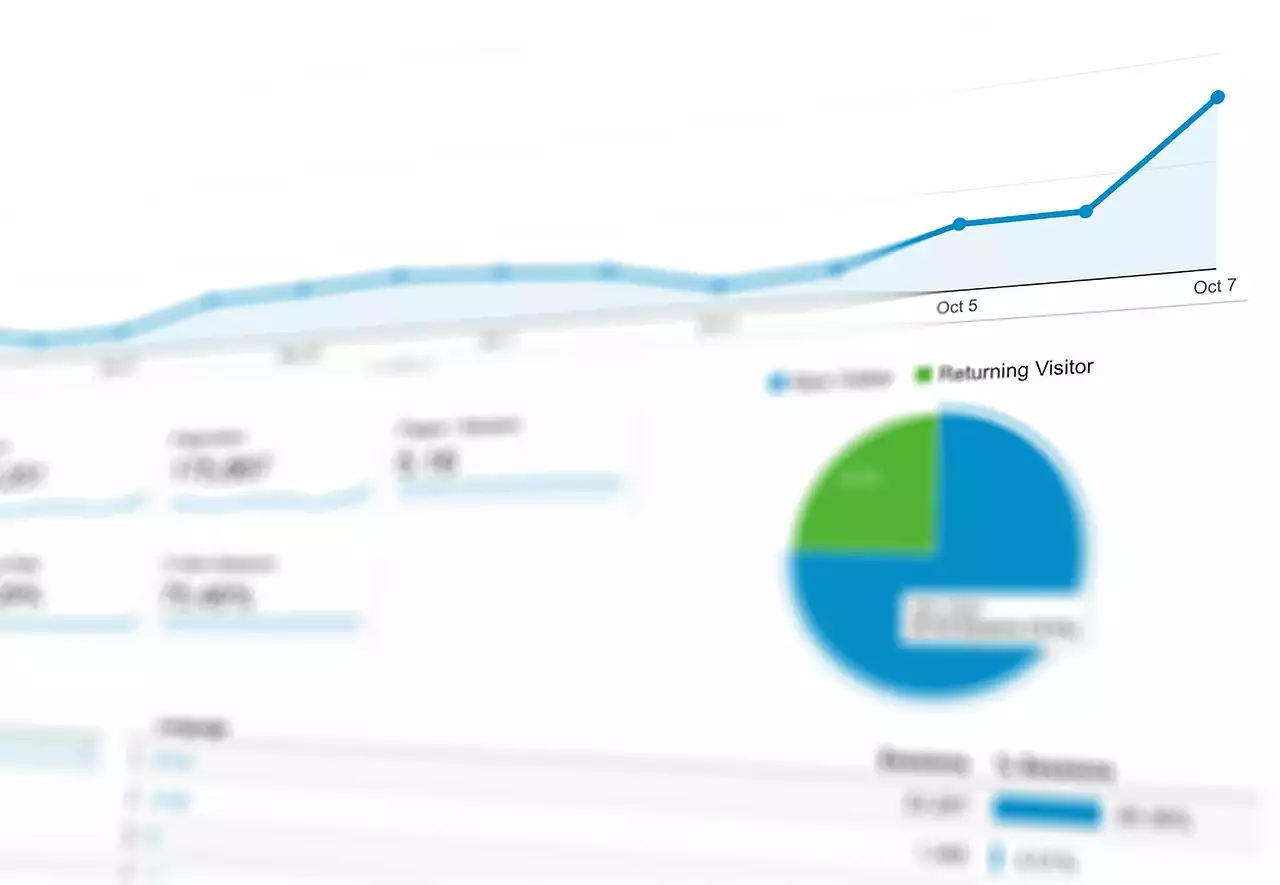Why web analytics is important for strategic decision making
Web analytics is the process of collecting, analyzing, and reporting data on website usage. This data is then used to optimize website performance, improve user experience, and drive conversions. Web analytics is important for strategic decision making because it provides businesses with insights into their customers' behavior and preferences. By analyzing website traffic, user engagement, and conversion rates, businesses can determine what is working and what is not, and make informed decisions about where to focus their efforts.
For example, web analytics can help businesses identify which pages on their website are most popular, which products or services are most frequently viewed or purchased, and which marketing channels are driving the most traffic and conversions. Armed with this information, businesses can optimize their website content, product offerings, and marketing strategies to better meet their customers' needs and preferences, ultimately driving more revenue and growth.
In addition, web analytics can help businesses track the success of their marketing campaigns and make data-driven decisions about where to allocate their marketing budget. By analyzing the performance of different marketing channels, such as social media, email marketing, and paid advertising, businesses can identify which channels are driving the most traffic and conversions, and adjust their marketing strategy accordingly.
Key metrics to track in web analytics
When it comes to web analytics, there are a variety of metrics that businesses can track to gain insights into their website performance and customer behavior. Here are some of the key metrics to keep in mind:
Website Traffic: Website traffic refers to the number of visitors to your website over a set period of time. This metric can help businesses understand how many people are visiting their website and how frequently.
Bounce Rate: Bounce rate refers to the percentage of visitors who leave your website after viewing only one page. A high bounce rate can indicate that your website content or user experience needs improvement.
Time on Site: Time on site refers to the amount of time that visitors spend on your website. This metric can help businesses understand how engaged their visitors are and how well their website content is resonating with their target audience.
Conversion Rate: Conversion rate refers to the percentage of visitors who complete a desired action on your website, such as making a purchase or filling out a contact form. This metric is a key indicator of how effective your website and marketing strategies are at driving conversions.
Customer Acquisition Cost: Customer acquisition cost refers to the amount of money that businesses spend to acquire a new customer. This metric can help businesses understand the ROI of their marketing strategies and identify areas for improvement.
Understanding user behavior through web analytics
One of the most powerful benefits of web analytics is its ability to help businesses understand their customers' behavior and preferences. By analyzing user behavior on your website, businesses can gain insights into what drives their customers to take action, and make informed decisions about how to optimize their website and marketing strategies.
For example, web analytics can help businesses understand which pages on their website are most commonly visited, which products or services are most frequently viewed or purchased, and which marketing channels are driving the most traffic and conversions. Armed with this information, businesses can optimize their website content and product offerings to better meet their customers' needs and preferences.
In addition, web analytics can help businesses identify customer pain points and areas for improvement. For example, if a high percentage of visitors are leaving your website after viewing only one page, this could indicate that your website content or user experience needs improvement. By identifying these pain points, businesses can make strategic decisions about how to optimize their website and marketing strategies to better meet their customers' needs and preferences.
Identifying areas for improvement through web analytics
One of the most powerful benefits of web analytics is its ability to help businesses identify areas for improvement. By analyzing website performance metrics, businesses can gain insights into what is working and what is not, and make informed decisions about how to optimize their website and marketing strategies.
For example, if a high percentage of visitors are leaving your website after viewing only one page, this could indicate that your website content or user experience needs improvement. Similarly, if conversion rates are low, this could indicate that your website or marketing funnel needs optimization.
Web analytics can also help businesses identify which marketing channels are driving the most traffic and conversions, and adjust their marketing strategy accordingly. For example, if social media is driving a high percentage of website traffic and conversions, businesses may want to invest more heavily in social media marketing.
Utilizing web analytics for website optimization
Web analytics can be a powerful tool for website optimization. By analyzing website performance metrics, businesses can gain insights into what is working and what is not, and make informed decisions about how to optimize their website and marketing strategies.
For example, if a high percentage of visitors are leaving your website after viewing only one page, this could indicate that your website content or user experience needs improvement. Similarly, if conversion rates are low, this could indicate that your website or marketing funnel needs optimization.
In addition, web analytics can help businesses optimize their website for search engines. By analyzing website traffic and keyword performance, businesses can identify which keywords are driving the most traffic and conversions, and optimize their website content accordingly.
Tools for web analytics
There are a variety of tools available for web analytics, ranging from free options to more advanced paid options. Here are some of the most popular tools for web analytics:
Google Analytics: Google Analytics is a free web analytics tool that provides businesses with insights into their website performance and customer behavior. Google Analytics provides businesses with a wide range of metrics, including website traffic, bounce rate, time on site, and conversion rate.
Adobe Analytics: Adobe Analytics is a more advanced web analytics tool that provides businesses with a wide range of metrics and advanced reporting capabilities. Adobe Analytics is typically used by larger businesses or enterprise-level organizations.
Kissmetrics: Kissmetrics is a web analytics tool that focuses on customer behavior and engagement. Kissmetrics provides businesses with insights into how customers interact with their website and marketing campaigns, and helps businesses optimize their marketing strategies accordingly.
Implementing web analytics into your business strategy
To effectively utilize web analytics for strategic decision making, businesses need to have a clear plan for implementation. Here are some steps that businesses can take to implement web analytics into their business strategy:
1. Set goals: Before implementing web analytics, businesses should have a clear set of goals in mind. These goals should be specific, measurable, and tied to the overall business strategy.
2. Choose the right tools: Once goals are established, businesses should choose the right web analytics tools to help them achieve those goals. This may involve selecting a free tool like Google Analytics or investing in a more advanced tool like Adobe Analytics.
3. Track key metrics: Once web analytics tools are in place, businesses should track key metrics that are tied to their goals. These metrics may include website traffic, bounce rate, time on site, conversion rate, and customer acquisition cost.
4. Analyze data: With data in hand, businesses should analyze the data to gain insights into customer behavior and website performance. This analysis should be used to identify areas for improvement and make informed, data-driven decisions about how to optimize website and marketing strategies.
5. Adjust strategies: Based on data analysis, businesses should adjust their website and marketing strategies to better meet their customers' needs and preferences. This may involve optimizing website content and product offerings, adjusting marketing channels, or investing in new marketing strategies altogether.
Common mistakes to avoid in web analytics
While web analytics can be a powerful tool for strategic decision making, there are also some common mistakes that businesses should avoid. Here are some of the most common mistakes to keep in mind:
1. Focusing on the wrong metrics: One of the most common mistakes in web analytics is focusing on the wrong metrics. It's important to choose metrics that are tied to your business goals and provide meaningful insights into website performance and customer behavior.
2. Ignoring context: Another common mistake in web analytics is ignoring context. Metrics should be analyzed in the context of business goals and overall marketing strategy.
3. Not setting goals: Without clear goals in place, it's difficult to effectively utilize web analytics for strategic decision making. Businesses should set clear, measurable goals before implementing web analytics.
4. Not analyzing data: Collecting data is only half the battle; businesses also need to analyze the data to gain insights into customer behavior and website performance.
5. Not adjusting strategies: Based on data analysis, businesses should adjust their website and marketing strategies to better meet their customers' needs and preferences.










